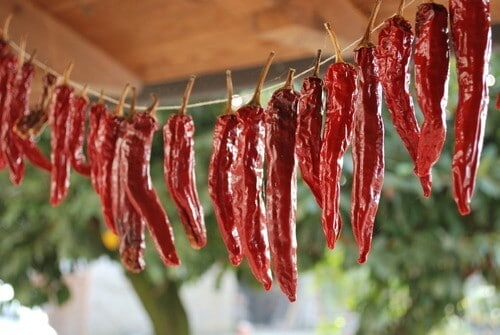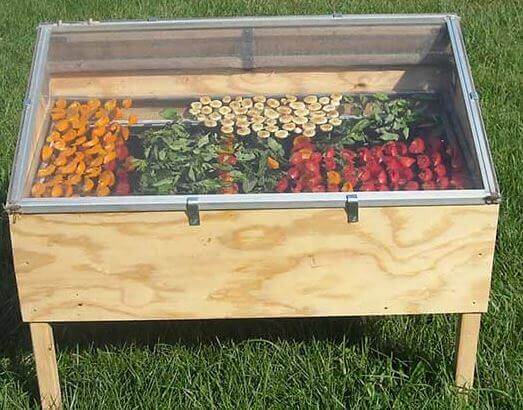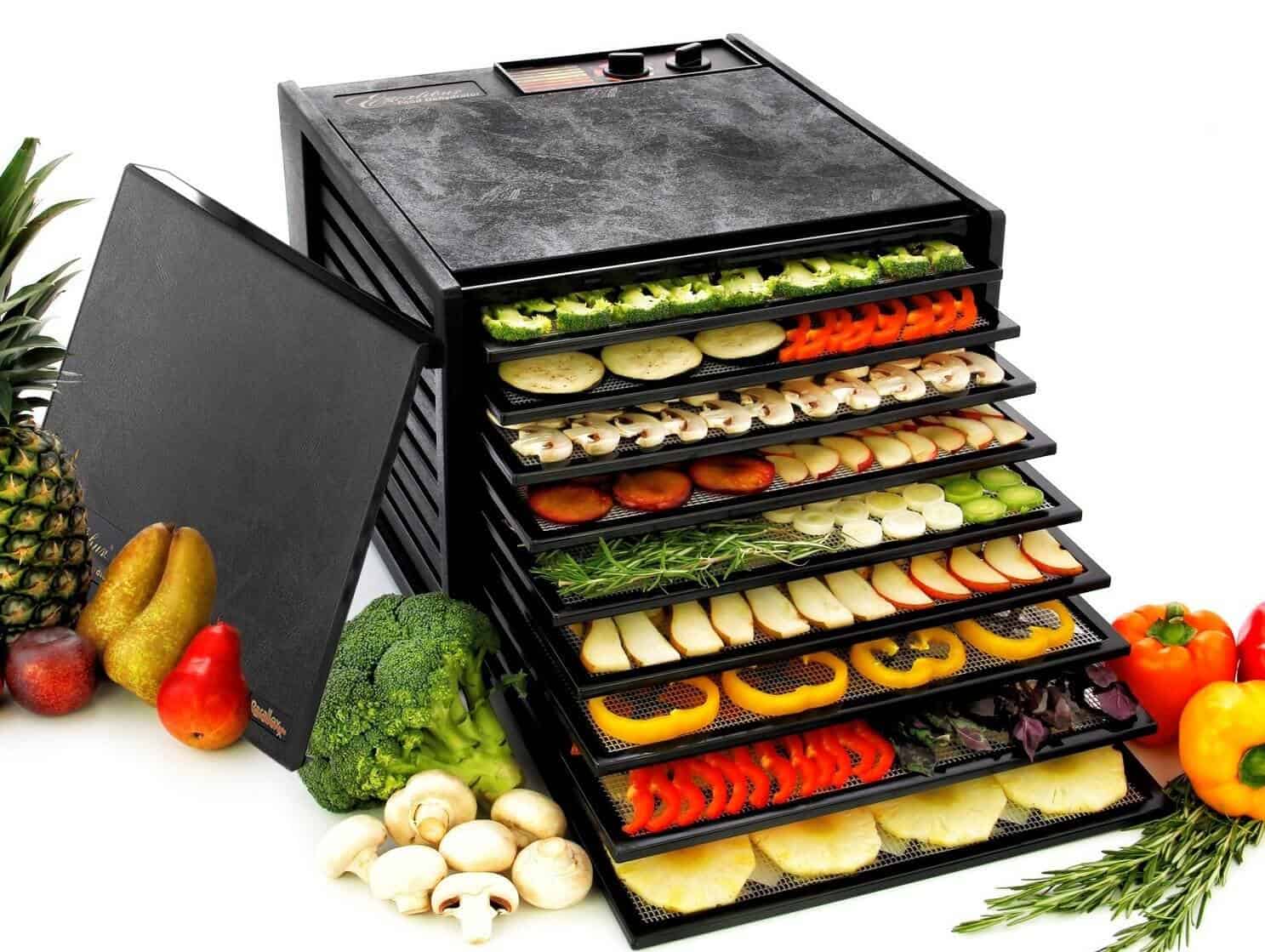https://prepperswill.com/make-your-own-dehydrated-meals/

Make Your Own Dehydrated Meals In 6 Easy Steps
October 18, 2019 by Eduard Munteanu
In this article, we are going to be taking a look at dehydrated meals. We have all seen the packages of shriveled up banana slices, and the dried vegetables in packets. You may even have eaten them. However, when you are a prepper, it is not just banana and vegetables that you want to eat. While they are great foods, it will get very dull, very quickly.
That is why we are going to be looking at actual meals, what they are, how long they will last, and how to make them yourself.
What Are Dehydrated Meals?
Dehydrated meals are meals that are made up of different foods that you would usually have in a meal, put into a storage container of some sort, and then cooked when you want them. Dehydrating food dates back to as far as 12,000 BC. So, it is an ancient process that has served people well for a long time. That leads us to the question of what is dehydrated food?
Dehydrated food is any food that has had the water taken out of it. In the ancient days, that process was completed by only putting food in the hot sun and allowing the food to dry out. However, that process has changed quite a bit since then. Although, if push came to shove, and you live in a dry and hot enough place, you could still use that technique.
The Egyptians were the first people to use the sun to dry food out for preservation actively, but that was almost impossible in wetter climates such as Europe. That is where the beginning of the evolution of food dehydration starts.

First, fish and meat were quickly dried in the desert by placing them in direct sunlight until all of the water had evaporated. After that was found to be very useful in preserving food, people started to hang foods such as herbs, fruits, and vegetables up on a line across a room by an open fire.
People still use both of those methods today, and if you want to try it for yourself, keep reading for our guide on how to do it.
So, What Meals Can You Make By Dehydration?
Nowadays, there are so many different foods that are made by dehydration. Pasta and rice packets are some of the main things that you have seen as actual meals. You may even have some of them in your cupboard at home. We use them quite regularly, in fact, I bought some just yesterday. Now, in the 21st century, there are so many methods of dehydration that there is almost nothing that can’t be dehydrated.
More often than not, you will be able to look in your cupboards at home and find various food that has been through this process. Now, people do it like that for a few reasons:
Storage and Transportation
When you dehydrate something, it takes out all of the water. Foods will often have more water in them than you think. Take the simple garden pea, for example. Peas are the seeds of the annual pea plant. When people harvest peas, they can be up to 7.5mm or 0.3inches in diameter with a water content of up to 14%. (Over 14% and they become unable to be used.)
Pea seeds dehydrate to a point at which they have as little as 5% water without deterioration. So, if we consider 100lbs of peas, there is up to 14% of that which is water, that is 14lbs. If peas are dehydrated to 5% water content, that means that we reduce that water weight by 9lbs. If you think about that by the truckload, that is an awful lot of weight that you can save by dehydration.
Not only can you save a huge amount of weight, but you can also save a lot of space by removing the water from them. A 7.5mm pea can shrink down to approximately 4mm. That is nearly a 50% space saving too!
Lengthening use-by dates
Believe it or not, oxygen is what makes food go bad. That is why it is highly recommended to store food in airtight containers. However, water has a lot of oxygen in it, too. Therefore, removing the water, and the oxygen contained in water will lengthen the use-by date by quite a lot alone. The periods can be extended again by utilizing different storage methods.
How Long Do They Last?
How long do dehydrated meals last is like asking how long a piece of string is? It all depends on what ingredients you use, how much you dry them, and how you store them. However, While we are talking about peas, let’s have a look at the length of time that you can make them last in comparison to fresh.
For this example, we are going to look at how long the food will last in a pantry. That is because, as a prepper, you are very unlikely to be running a refrigerator on your generator when you need this food the most.
As you can see, you can significantly lengthen the usage time of peas from days to an infinite amount of time if you use the correct storage methods and O2 absorbers.
- Fresh peas in the pod. – 2-3 days if you do not shell the peas until you need them.
- Dried peas in Air-tight container. – 4-5 years.
- Dried peas in container with O2 absorber. – Indefinite time.
- Canned peas. – About one year.
However, not all foods will have this endless amount of time that you can store them. You will need to check how long each food will last. But the use of oxygen absorbers in an airtight container will dramatically increase the shelf life of any food. Take a look inside a packet of jerky, for example.
Methods Of Dehydration
There are a few methods that are being used today to dehydrate food for storage. In this section, we are going to have a quick look at what they are:

As you can see, there are five main ways in which you can dehydrate food. However, there is one that stands out from the rest. If you want to make your own dehydrated meals, then you should invest in a dehydrator.
- Sunlight. – Sunlight is the oldest way of drying food for storage, and of course, it still works today. All you need to do is lay your food out in a hot, sunny spot and wait. It does have its downfalls though. You have to be in a climate that supports it, and you have to keep an eye on it to make sure that nothing gets onto the food.
- Oven. – Oven drying is probably the most common way in which the average person dries food. But it takes quite a long time to do and stops you using the oven for anything else.
- Microwave. – Microwaves can dry small amounts of food pretty thoroughly. However, it is only small amounts of food, such as herbs.
- Household dehydrator. – Household dehydrators are the way to go now. They are relatively cheap to buy, and they do not take up any other cooking appliance in the home.
- Freeze-Drying. – Freeze-drying food is a pretty good way to preserve food for long term. However, you need a vacuum chamber, and it has to be a pretty large one to make any food for prepping.
How To Make Your Own Dehydrated Meals
Preppers have got a couple of options: You can either buy ready-made dehydrated meals such as the Peak Refuel freeze-dried camping meals. Or you can make your own.

There are a lot of options for pre-packed dehydrated meals, but unless you have a specific thing that you are preparing for, such as a bug-out practice run, then you may want to learn to dehydrate food yourself. While doing it yourself is a lot more time consuming, once you know how to do it, you can prepare a lot of food over a pretty short time.
Your first step is to purchase a dehydrator. There are many options on the market. However, I highly suggest that you invest a little bit of money in a decent one with stainless steel trays. Thank me for that later. The one that we use is a lot like this one: The Excalibur 2900 food dehydrator.

